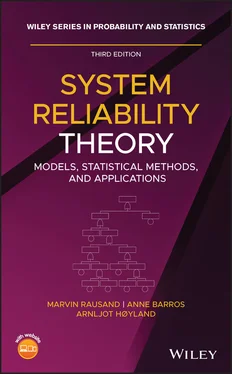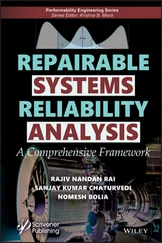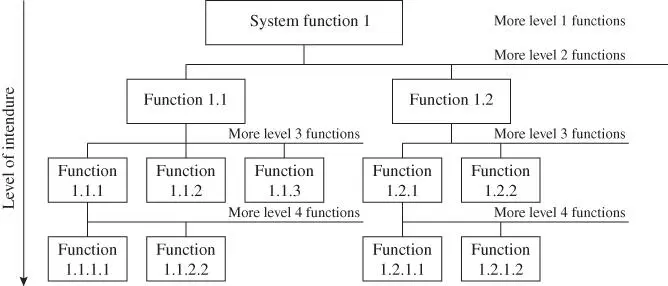
Figure 2.4Function tree (generic).
A lower level function may be required by a number of main functions and may therefore appear several places in the function tree.
A widely used approach to functional modeling was introduced by Douglas T. Ross of Sof Tech Inc. in 1973, called the structured analysis and design technique (SADT). The SADT approach is described, for example, in Lambert et al. (1999) and Marca and McGowan (2006). In the SADT diagram each functional block is modeled according to a structure of five main elements, as shown in Figure 2.3
Function. Definition of the function to be performed.
Inputs. The energy, materials, and information necessary to perform the function.
Controls. The controls and other elements that constrain or govern how the function is carried out.
Resources. The people, systems, facilities, or equipment necessary to carry out the function.
Outputs. The result of the function. The outputs are sometimes split in two parts; the wanted outputs from the function, and unwanted outputs.
The output of a functional block may be the input to another functional block, or may act as a control of another functional block. This way the functional blocks can be linked to become a functional block diagram. An illustration of an SADT diagram for subsea oil and gas stimulation is shown in Figure 2.5. The diagram was developed as part of a student project at NTNU (Ødegaard 2002).
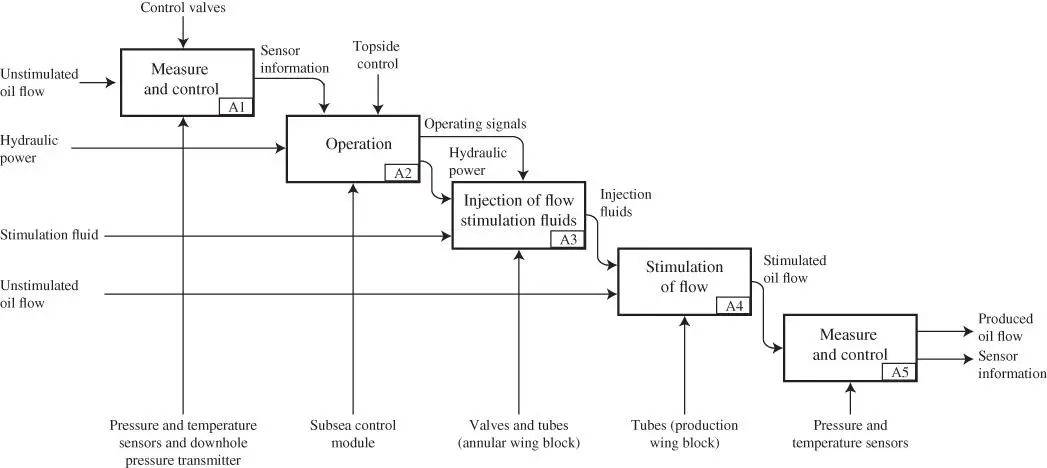
Figure 2.5SADT diagram for subsea oil and gas stimulation.
When constructing an SADT model, we use a top‐down approach as shown in Figure 2.6. The top level represents a required system function. The functions necessary to fulfill the system function are established as an SADT diagram at the next level. Each function on this level is then broken down to lower level functions, and so on, until the desired level of decomposition has been reached. The hierarchy is maintained via a numbering system that organizes parent and child diagrams.
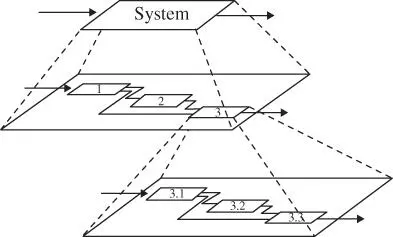
Figure 2.6Top‐down approach to establish an SADT model.
The functional block in Figure 2.3is also used in the Integrated definition language (IDEF), which is based on SADT and developed for the US Air Force. IDEF is divided into several modules. The module for modeling of system functions is called IDEF 0 (e.g. see U.S. Air Force 1981; U.S. DoD 2001; Marca and McGowan 2006).
For new systems, SADT and IDEF 0 may be used to define the requirements and specify the functions and as a basis for suggesting a solution that meets the requirements and performs the functions. For existing systems, SADT and IDEF 0 can be used to analyze the functions the system performs and to record the mechanisms (means) by which these functions are accomplished.
The term analysis means to break down – or decompose – a system or problem into its constituent components in order to get a better understanding of it. In a system analysis, all the constituent components are studied individually. The word “analysis” comes from an ancient Greek word that means “breaking up.” To be able to analyze a system, the system must comply with the Newtonian–Cartesian paradigm (see box).
A synthesis is an opposite process of an analysis and is concerned with the combination of components and their properties to form a connected whole (i.e. a system).
In a system reliability study, we usually need to apply both analysis and synthesis to obtain a sufficient understanding of the system and its reliability.
The processes of system analysis and synthesis are illustrated in Figure 2.7.
2.7 Simple, Complicated, and Complex Systems
Most modern books on reliability theory and analysis seem to be concerned with “complex systems,” but (almost) none of them define what they mean by the term complex . In our understanding, we may classify a system into one out of three categories:
Simple systems. A simple system is easy to understand and can be analyzed by following a defined procedure or algorithm. Most simple systems have a rather small number of components. Simple systems can generally be modeled by a series–parallel RBD (see Section 2.8).The Newtonian–Cartesian ParadigmA paradigm is a worldview underlying the theories and methodologies of a scientific subject. For system reliability, the Newtonian–Cartesian paradigm has been, and still is, the most essential. The basis for this paradigm was made by the French philosopher and scientist Réne Descartes (1596–1650) and the English mathematician and physicist Sir Isaac Newton (1642–1726).The paradigm is based on Newton's three laws of forces and motion, his theories on universal gravitation, and the unifying theory that is called Newtonian mechanics. Another important basis for the paradigm is Descartes' theory of reductionism and his division between mind and matter, between mental and physical processes. Reductionism implies that any system (or problem) can be adequately understood by reducing it, or decomposing it, to a set of its constituent components and by carefully and individually studying each component. When all the components on the lowest level have been carefully studied, a synthesis process can be started. By combining the knowledge about the components that feed into a module on the upper, next level, the paradigm implies that all important properties of this module can be deduced from the properties of its constituent components. This is then continued until the system level is reached (see Figure 2.7).The Newtonian–Cartesian paradigm sees the world as a number of discrete, unchanging objects in an empty space. These objects interact in a linear, cause and effect manner. The time is linear and universal and not affected by speed or gravitation. The system behavior is deterministic, such that a particular cause leads to a unique effect. The paradigm supports the analysis of systems with a finite number of (mainly) independent parts that interact in a well‐defined manner with relatively few interconnections.The Newtonian–Cartesian paradigm is also called the Newtonian paradigm and the mechanistic paradigm.The Newtonian–Cartesian paradigm has had an enormous success and most of our current knowledge about physical systems are based on this paradigm. Much more information about the Newtonian–Cartesian paradigm can be found by visiting a good library or searching the Internet.
Complicated systems. A complicated system has a high number of components with a fair degree of interrelationships and interdependencies between the components. By using current knowledge (e.g. by involving subject experts), we are able to understand the relevant system properties and to analyze it.
Complex systems. In a complex system, the behavior of at least some of the components or the interactions between them do not comply with the requirements of the Newtonian–Cartesian paradigm. A complex system cannot be adequately understood and analyzed by traditional approaches because the system is something more than a sum of its components.
Читать дальше
